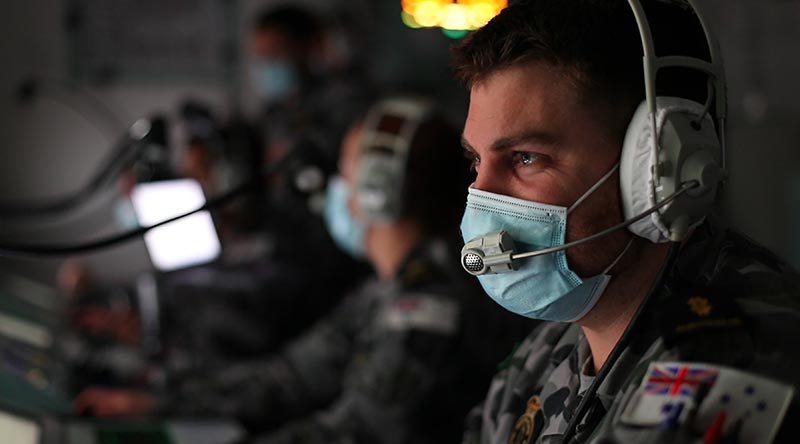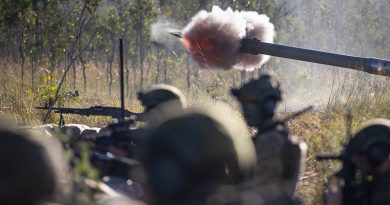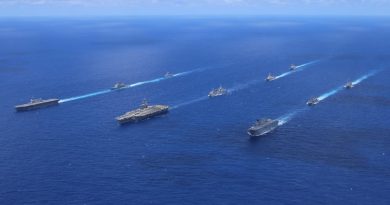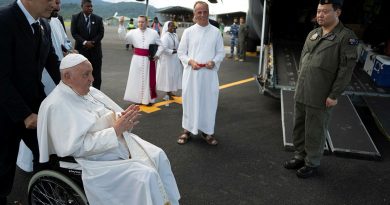East and west crews fight same battle at same time
Share the post "East and west crews fight same battle at same time"

Two Royal Australian Navy warship crews conducted high-end simulated sea combat in the same exercise but on opposite coasts as part of Exercise Viking Raider.
CAPTION: HMAS Anzac sailor Able Seaman Curtis Willmore monitors his console in the operations room of the frigate simulator at HMAS Stirling, Western Australia, during Exercise Viking Raider. Photo by Leading Seaman Ronnie Baltoft. Story by Lieutenant Ryan Zerbe.
HMA Ships Brisbane and Anzac fought together in a real-time maritime warfare scenario using operation room simulators in NSW and Western Australia last month.
Personnel from HMAS Brisbane used the air warfare destroyer simulator at HMAS Watson to bring the Hobart-class warship’s advanced layered attack and defensive combat capabilities to the exercise.
At the same time, personnel from HMAS Anzac used the frigate simulator at HMAS Stirling to add long range air, surface and sub-surface capabilities to the scenario, in which they defended a high-value target against an adversarial force.
Anzac’s Principal Warfare Officer Royal Navy exchange officer Lieutenant Edwin Smith said Exercise Viking Raider tested the ship’s operations room crew in a multi-ship environment, improving the team’s skills.
“My job is to bring all the information from our internal sensors as well as the external information feeds together to give us a coherent picture, and piece that together with the law and rules of engagement in order to make recommendations to the captain,” Lieutenant Smith said.
“As an ops room crew, we’re looking to take away our own internal procedures and the drills experience we need in order to be able to work effectively as part of a task force.
“The beauty of using a simulator is that it gives us opportunities to conduct the drills as if it were for real.
“We can act as if we’re in a full wartime environment.
“You can’t replace the real world and how a ship acts and feels, but simulation means we can really fight the ship properly.”
Director of Navy’s Fleet Force Generation Directorate Captain Pete Bartlett said synthetic training through exercises such as Viking Raider complemented traditional at-sea training and provided unique benefits.
“Simulation removes the restrictions of the real world by allowing for an increase in scale, density and complexity of the training environment,” Captain Bartlett said.
“We can challenge multiple ships working as a surface action group in high-end air warfare, surface strike and interdiction scenarios in a much more cost-effective way and without committing resources at sea.
“This also helps balance training needs with maintenance for our ships and respite requirements for our people.
“One of the biggest advantages of synthetic exercises is the ability to immediately play back the scenario, review the data and break down any lessons learnt.
“Ships can see where they can do better and sharpen their response for the next run.
“You just can’t do that outside of a simulated environment.”
.
.
.
.
.
.

.
.
Share the post "East and west crews fight same battle at same time"





